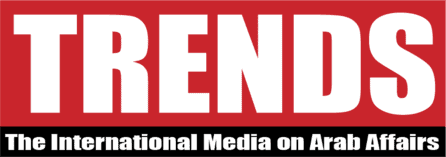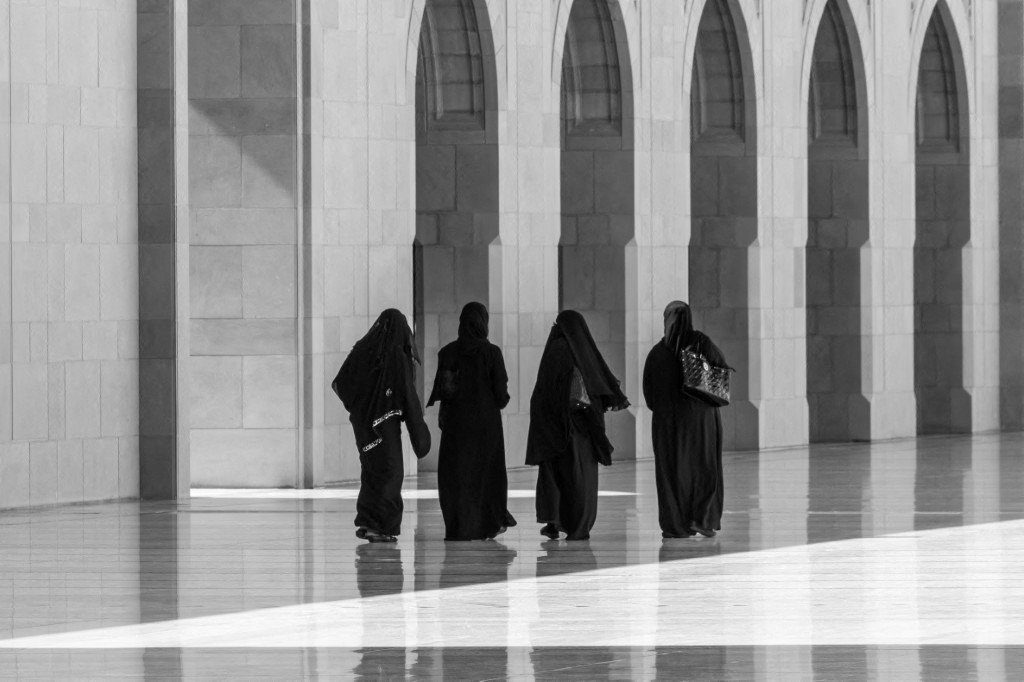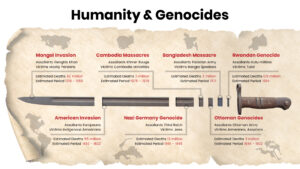It may appear small and a modest player in the big scheme of things, Oman’s economic health is as important to the overall Arabian Gulf region as is any other economy in the vicinity.
Even though the regional big brothers such as Saudi Arabia and the United Arab Emirates take a huge portion of a GCC’s regional economic pie and get well-deserved media attention, smaller economies like Oman and Bahrain are somewhat left behind when it comes to either regional or international media coverage.
If one looks at the economic performance of Oman, there are several lessons to be learned – the foremost being slow and steady win the race.
Classified by the World Bank as a high-income country with per capita GDP of US$20,250, Oman’s GDP in 2024 was US$106.9 billion. With just 5.2 million residents and certain geo-economic limitations, Oman has much bigger room to maneuver its economic policies to accommodate the necessities of the AI-cum-climate change era.
Whether it is economic diversification, sustainable development of infrastructure, healthcare and the education sectors or the promotion of Omani culture and tourism, the Sultanate’s leadership has demonstrated immense restraint and pragmatism while making policies.
It seems Oman places itself somewhere between the risk-tolerant UAE and the aggressively ambitious Saudi Arabia, when it comes to future planning. Don’t be surprised if you are visiting Omani capital city Muscat and one of the citizens tell you: “Slow and steady wins the race”. Or as the Arabic folk proverb says, Lā fātaka al-laḥm sharib al-maraq (If you missed the meat, drink the broth), which in essence conveys rationalism and adaptability.
With volatile geopolitics and the resulting uncertainty, the year 2025 has been challenging for most of the countries across the world. The tariff winds emerging from Washington D.C. have shaken economies in all directions, but Oman managed to get the basic 10 percent tariff despite the 2009 US-Oman Free Trade Agreement (FTA).
Brazil and India, for example, received the wrath of US President Donald Trump’s tough action with the highest tariff of 50 percent each. In comparison, 10 percent tariff on Oman’s non-energy exports to the United States appears miniscule provided that most non-energy Oman exports to the US are protected from tariffs under the 2009 FTA.
Looking back at 2025, Oman’s GDP at current prices registered a growth of 2.44 percent during the first half of 2025 reaching US$53.73 billion as against US$52.46 billion, according to Omani Ministry of Economy’s performance bulletin released last week, which attributed the modest growth to an increase in the natural gas activities which reached 56.52 percent, in addition to the growth of non-oil activities by 4.11 percent.
As for the performance of public finances during the first half of 2025, the decline in net oil and gas revenues led to a 5.78 percent decrease in the state’s total revenues. As a result, Standard & Poor’s has maintained the credit rating of Oman at BBB- during the first half of 2025 with a stable outlook, says the government bulletin accessed by TRENDS.
However, the decline in oil exports, which fell by 16.08 percent, weighed on Oman’s external trade indicators. Total merchandise exports stood at US$29.91 billion during H1 2025, down 9.5 percent compared to the same period in 2024.
Further explaining the details, the official bulletin indicates that non-oil exports recorded a strong growth of 9.1 percent. In terms of economic diversification, the figure of 9.1 percent growth demonstrates that Oman’s policies are working.
By the end of H1 2025, foreign direct investment (FDI) in Oman reached US$78.75 billion, an increase of 12.8 percent (US$8.92 billion) compared to the same period in 2024. The oil and gas extraction sector accounted for the largest share of FDI at 80.7 percent, followed by manufacturing (8.9 percent) and financial sector (4.5 percent), it said, adding that the United Kingdom was the top FDI provider contributing 51.9 percent of the total FDI during the period followed by the United States (26.7 percent), Kuwait (4.5 percent), China (2.82 percent), Qatar (2.30 percent) and the UAE (2.03 percent).
One of the major criteria for the success of most economies in the region is the performance of the private sector, especially the job creation for the locals. Oman has witnessed a healthy growth of 2.23 percent in the number of Omanis working in the private sector. By the end of the first half of this year, 406,580 Omanis were employed by the private sector in the country, per the ministry’s official figures.
With Oman housing 5.2 million residents, about 44 percent are expatriates and the rest are Omani citizens – approximately 2.8 million. World Bank in its latest stats said that 73 percent of the Omani population is of working age, which is around to 2.04 million.
So, the number of Omanis working for the private sector is around 20 percent. Independent research suggests that Oman’s unemployment rate this year has been fluctuating between 2.1 and 2.9 percent, however, the jobless rate among youth (18-24 years age group) is way higher. Last year, the unemployment among Omani youth was 13.9 percent, according to the World Bank data which relies on International Labor Organization.
Without doubt, there are some economic challenges, but Oman is planning for a robust socioeconomic future by focusing on business sectors such as tourism, aviation, infrastructure, services and energy logistics. Oman is the only country with a geographical advantage in the GCC that does not have to rely on the volatile Strait of Hormuz when shipping oil and gas from its ports. Saudi Arabia has the Red Sea along its west coast, but almost all its oil reserves are in the eastern provinces along the coast of the Arabian Gulf.
Earlier this month, Oman signed a pact with the Washington DC-headquartered World Bank to open an office in the Sultanate. The World Bank office will represent its affiliated organizations, including the International Bank for Reconstruction and Development, the International Development Association, the International Finance Corporation, and the Multilateral Investment Guarantee Agency solidifying Oman’s position in the global financial equation.
Also, this October, Oman’s head of airports project at the Civil Aviation Authority Salim Al Harrasi laid out a roadmap for the development of Muscat, Sohar and Salalah airports, according to a report published by Muscat Daily.
In a social media post, Harrasi said that direct investments in Muscat Airport City have surpassed US$80 million, with projections to exceed US$500 million by 2030, and a total of more than US$800 million across the three airport cities – Muscat, Salalah and Suhar – by 2030.
Earlier this year in July, Oman signed strategic pacts with Malaysia’s WCT Berhad and Singapore’s Changi Airports International to boost growth and revenues of Oman’s airports.
Speaking to international media, Oman’s Minister of Economy Said bin Mohammed bin Ahmed Al Saqri commented recently that economic diversification is the need of the hour and his country has taken powerful steps to develop non-oil sectors focusing on tourism and sustainable energy initiatives including solar and wind.
Oman is advancing its transition to a knowledge-based economy, the minister said, adding that several national digital economy initiatives are designed to contribute 10 percent to the nation’s GDP by 2040.
Describing his country’s future plans Al Saqri said that Oman’s five-year development plan focuses on sectors like manufacturing, tourism, mining, logistics, and agriculture, all powered by a green economy, reported Global Insight – a division of Japan Times.
While Omani government’s economic teams are leaving no stone unturned to maintain their country’s sustainable growth, Oman has also played a major role of a peacemaker on the international stage. Getting your voice heard on the international stage is no walk in the park for the modest country like Oman.
Hosting several rounds of nuclear talks between archfoes – Iran and the United States – Oman emerged as neutral diplomatic player and earned respect in the region and in the West. Last week, the United Nations showered Oman with praises over its diplomatic leadership.
In a call between UN Secretary-General António Guterres and Omani Foreign Minister Sayyid Badr Albusaidi, the UN head thanked Oman for its “humanitarian and diplomatic leadership” in securing the release and protection of several UN employees who had been detained or restricted by Houthis in Sanaa.
Per the official communique, Guterres recognized Oman’s intervention as instrumental in de-escalating tensions and restoring operational stability for UN missions in Yemen. The situation had drawn international concern after reports emerged of UN staff being held under house arrest and facing movement restrictions in Houthi-controlled areas.
“Oman’s commitment to peace and humanitarian principles continues to make a tangible difference in the region,” Guterres said, praising Sultan Haitham bin Tarik for his leadership and support of UN efforts to promote stability in Yemen.
Envisioned by late Sultan Qaboos bin Said and launched in 2021, the Oman Vision 2040 has been carried forward by Sultan Haitham bin Tarik. Analyzing regular updates from the different government departments, the path to realizing Oman Vision 2040 is on track.
As witnessed in some economies, grand national visions soar with glittering promise, only to deflate into bubbles of trouble resulting in straining public finances, costing jobs, and flooding headlines with tales of collapse. Oman, to its credit, appears to be taking a different road. Its pace may seem measured, even slow to the impatient observer, but there is wisdom in restraint and sustainable growth is a marathon. If Oman continues to build brick by careful brick, it may not dazzle overnight but it will endure, and in the end, that endurance will be its quiet triumph.
(The author is a senior journalist based in Toronto, Canada)








